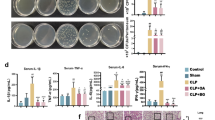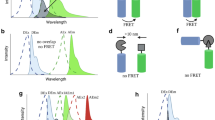Abstract
Pulse exposure of human mononuclear phagocytes to the monocyte locomotion-inhibitory factor produced byEntamoeba histolytica (i.e., the 369- to 765-Da chromatographic fraction obtained from the supernatant fluid of axenically grownE. histolytica) led to a swift increase in the intracellular concentration of adenosine 3′:5′ cyclic monophosphate (cAMP). A weaker response was observed in human polymorphonuclear leukocytes, the locomotion of which, however, is not inhibited by this amebic factor. The same chromatographic fraction obtained from the axenic medium control lacked this effect, at least upon mononuclear phagocytes. On the other hand, both the monocyte locomotion-inhibitory factor and the axenic medium control, possibly through shared culture medium components, induced comparable increases in guanosine 3′:5′ cyclic monophosphate (cGMP) in human mononuclear phagocytes and in polymorphonuclear leukocytes, thus suggesting that the latter nucleotide is not critical for the leukotactic inhibitory phenomenon. Our results suggest that like other leukotactic inhibitors, the monocyte locomotion-inhibitory factor produced byE. histolytica operates through modulations of intracellular cAMP.
Similar content being viewed by others
Abbreviations
- MP :
-
Mononuclear phagocytes (monocytes)
- MLIF :
-
monocyte locomotion-inhibitory factor
- PMN :
-
polymorphonuclear leukocytes
- cAMP :
-
adenosine 3′:5′ cyclic monophosphate
- cGMP :
-
guanosine 3′:5′ cyclic monophosphate
- PBS :
-
phosphate-buffered (pH 7.4) normal saline
- AMC :
-
axenic medium control Gey's-A; Gey's medium with 2% albumin
- ZAS :
-
zymosan-activated serum
- hpf :
-
high-power field (400x)
References
Aley SB, Scott WA, Cohn ZA (1980) Plasma membrane ofEntamoeba histolytica. J Exp Med 152:391–404
Birnbaum L (1990) Transduction of receptor signal into modulation of effector activity by G proteins: the first 20 years or so. FASEB J 4:3178–3188
Böyum A (1968) Isolation of mononuclear cells and granulocytes from human blood. Scand J Clin Lab Invest 21 [Suppl 97]:31–50
Caterina MJ, Devreotes PN (1991) Molecular insights into eukaryotic chemotaxis. FASEB J 5:3078–3085
Councilman WT, Lafleur HA (1891) Amoebic dysentery. Johns Hopkins Hosp Rep 2:395–548
Diamond LS (1961) Axenic cultivation ofEntamoeba histolytica. Science 134:336–337
Elsdon-Dew R (1971) Amebiasis as a world problem. Bull NY Acad Med 47:438–447
Estensen RD, Hill HR, Quie PG, Hogan N, Goldenberg ND (1973) Cyclic GMP and cell movement. Nature 245:458–460
Everson-Pears AG (1972) Histochemistry, theoretical and applied, vol 2. Churchill Livingstone, Edinburgh, pp 1305–1306
Gimenez JA, Pacheco MG, Cruz E, Hernández P, Merchant MT, Kretschmer RR (1987) Ultrastructural changes associated with the inhibition of monocyte chemotaxis caused by products ofE. histolytica. Lab Invest 57:45–51
Goldberg ND, Haddox M, Zeilig CE, Nicol SA, Acott TS, Glass DB (1976) Cyclic GMP, cyclic AMP, and the yin, yang hypothesis of biological regulation. J Invest Dermatol 67:641–645
Harvath L, Robbins JD, Russell AA, Seamon KB (1991) cAMP and human neutrophil chemotaxis. Elevation of cAMP differentially affects chemotactic responsiveness. J Immunol 146:224–232
Hatch GE, Nicols WK, Hill HR (1977) Cyclic nucleotide changes in human neutrophils induced by chemoattractant and chemotactic modulators. J Immunol 119:450–456
Hill HR, Estensen RD, Quie PG, Hogan NA, Goldberg ND (1975) Modulation of human neutrophil chemotactic responses by cyclic 3′,5′-guanosine monophosphate and cyclic 3′5′-adenosine monophosphate. Metabolism 24:447–456
Katsuki S, Arnold WP, Mittal CK, Murad F (1977) Stimulation of guanylate cyclase by sodium nitroprussiate nitroglycerin and nitric oxide in various tissue preparations and comparison to the effects of sodium azide and hydroxylamine. J Cycl Nucleot Res 3:23–25
Kretschmer RR, López-Osuna M (1990) Effector mechanisms and immunity to amebas. In: Kretschmer RR (ed) Amebiasis: infection and disease byEntamoeba histolytica. CRC, Boca Ratón, Florida, pp 105–122
Kretschmer RR, Collado ML, Pacheco MG, Salinas MC, López-Osuna M, Lecuona M, Castro EM, Arellano J (1985) Inhibition of human monocyte locomotion by products of axenically grownE. histolytica. Parasite Immunol 7:527–543
Kretschmer RR, Castro EM, Rico G, Noriega R, Arellano J (1989) Further characterization of a monocyte locomotion inhibitory factor produced by axenically grownEntamoeba histolytica. Parasitol Res 75:245–246
Kretschmer RR, Castro EM, Pacheco G, Rico G, Díaz-Guerra O, Arellano J (1991) The role of mannose in the receptor of the monocyte locomotion inhibitory factor produced byEntamoeba histolytica. Parasitol Res 77:374–378
Marx RS, McCall CE, Bass DA (1980) Chemotaxin-induced changes in cyclic adenosine monophosphate levels in human neutrophils. Infect Immun 29:284–286
Papierniak C, Bourey RE, Kretschmer RR, Gotoff SP, Colombetti L (1976) Technetium-99m labeling of human monocytes for chemotactic studies. J Nucl Med 17:988–992
Pérez-Tamayo R, Brandt H (1971) Amebiasis. In: Marcial-Rojas R (ed) pathology of protozoan and helminthic diseases, Williams and Wilkins, Baltimore, pp 145–188
Rico G, Dáz-Guerra O, Giménez-Scherer JA, Kretschmer RR (1992) Effect of the monocyte locomotion inhibitory factor (MLIF) produced byE. histolytica upon the respiratory burst of human leucocytes. Arch Med Res 23:157–159
Rivkin I, rosenblatt J, Becker EL (1975) The role of cyclic AMP in the chemotactic responsiveness and spontaneous motility of rabbit peritoneal neutrophils. The inhibition of neutrophil movement and the elevation of cyclic AMP levels by catecholamines, postaglandins, theophylline and cholera toxin. J Immunol 115:1126–1134
Salata RA, Pearson RD, Ravdin JI (1985) Interaction of human leucocytes andEntamoeba histolytica. Killing of virulent amebae by the activated macrophage. J Clin Invest 76:491
Sandler JA, Clyman RI, Manganiello VC, Vaughan M (1975) The effect of serotonin (5-hydroxytryptamine) and derivatives on guanosine 3′,5′-monophosphate in human monocytes. J Clin Invest 55:431–435
Sepúlveda B, Martínez-Palomo A (1982) Immunology of amebiasis byE. histolytica. In: Cohen S, Warren KS (eds) Immunology of parasitic disease. Blackwell, Oxford, pp 170–191
Siegel S (1956) Nonparametric statistics for behavioral sciences. McGraw Hill, New York, pp 116–127
Snyderman R, Altman LC, Hausman MS, Mergenhagen SE (1972) Human mononuclear leukocyte chemotaxis: a quantitative assay for humoral and cellular chemotactic factors. J Immunol 108:857–860
Tovey RC, Oldham KG, Whelan JAM (1974) A simple direct assay for cyclic AMP in plasma and other biological samples using an improved competitive protein binding technique. Clin Chim Acta 56:221–234
Zurier RB, Weissmann G, Hoffstein S, Kammerman S, Tai HH (1974) Mechanisms of lysosomal enzyme release from human leukocytes. II. Effects of cAMP and cGMP, autonomic agonists, and agents which affect microtubule function. J Clin Invest 53:297–309
Author information
Authors and Affiliations
Rights and permissions
About this article
Cite this article
Rico, G., Díaz-Guerra, O. & Kretschmer, R.R. Cyclic nucleotide changes induced in human leukocytes by a product of axenically grownEntamoeba histolytica that inhibits human monocyte locomotion. Parasitol Res 81, 158–162 (1995). https://doi.org/10.1007/BF00931623
Received:
Accepted:
Issue Date:
DOI: https://doi.org/10.1007/BF00931623




